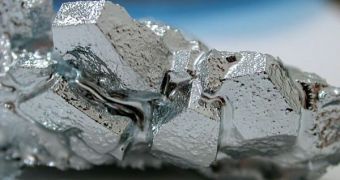Optics Professor Chunlei Guo, from the University of Rochester, has made headlines over the last couple of years with some of his innovations, including the laser that is able to change the color of metals when fired upon them. Originally thought to be nothing more than a method of producing aesthetically pleasing metals such as golden tungsten, or black aluminum, the technique soon revealed a massive, new potential – a potent tool for the identification of medical conditions over very short time frames.
The team under Guo's supervision detected the fact that altered metals were perfectly able to detect radiation that was emitted in terahertz wavelengths. This is the region of the electromagnetic spectrum that lies between infrared and microwave frequencies. These types of radiations, more commonly known as T-Rays, have proven to be extremely difficult to discover before, due to their elusive wavelengths and to the difficulties associated with constructing detectors fit for them.
“When we turned metals black, we knew that they became highly absorptive in the visible wavelength range because the altered metals appear pitch black to the eye. Here, we experimentally demonstrated that the enhanced absorption extends well into the far infrared and terahertz frequencies,” Guo adds. He conducted the work together with Anatoliy Vorobyev, his research assistant. A reason why T-rays are so important is their ability to cause excitement, as well as rotational and vibrational states, inside organic compounds. Pathogens, the microorganisms that cause numerous diseases, are among these organic compounds.
One of the advantages that T-rays have over X-rays is the fact that they do not ionize the matter around them, which basically means that they cause none of the side-effects generally associated with prolonged exposure to X-rays. “Terahertz electromagnetic radiation has the capability to interrogate tissues at the cellular level. If applied within microns of the subject of interest, this form of imaging has the theoretical capability to detect properties of molecular assemblages that could be attributes of disease states,” Professor Thomas Budingerm, who is an expert in bioengineering at the University of California in Berkeley (UCB), explains.

 14 DAY TRIAL //
14 DAY TRIAL //